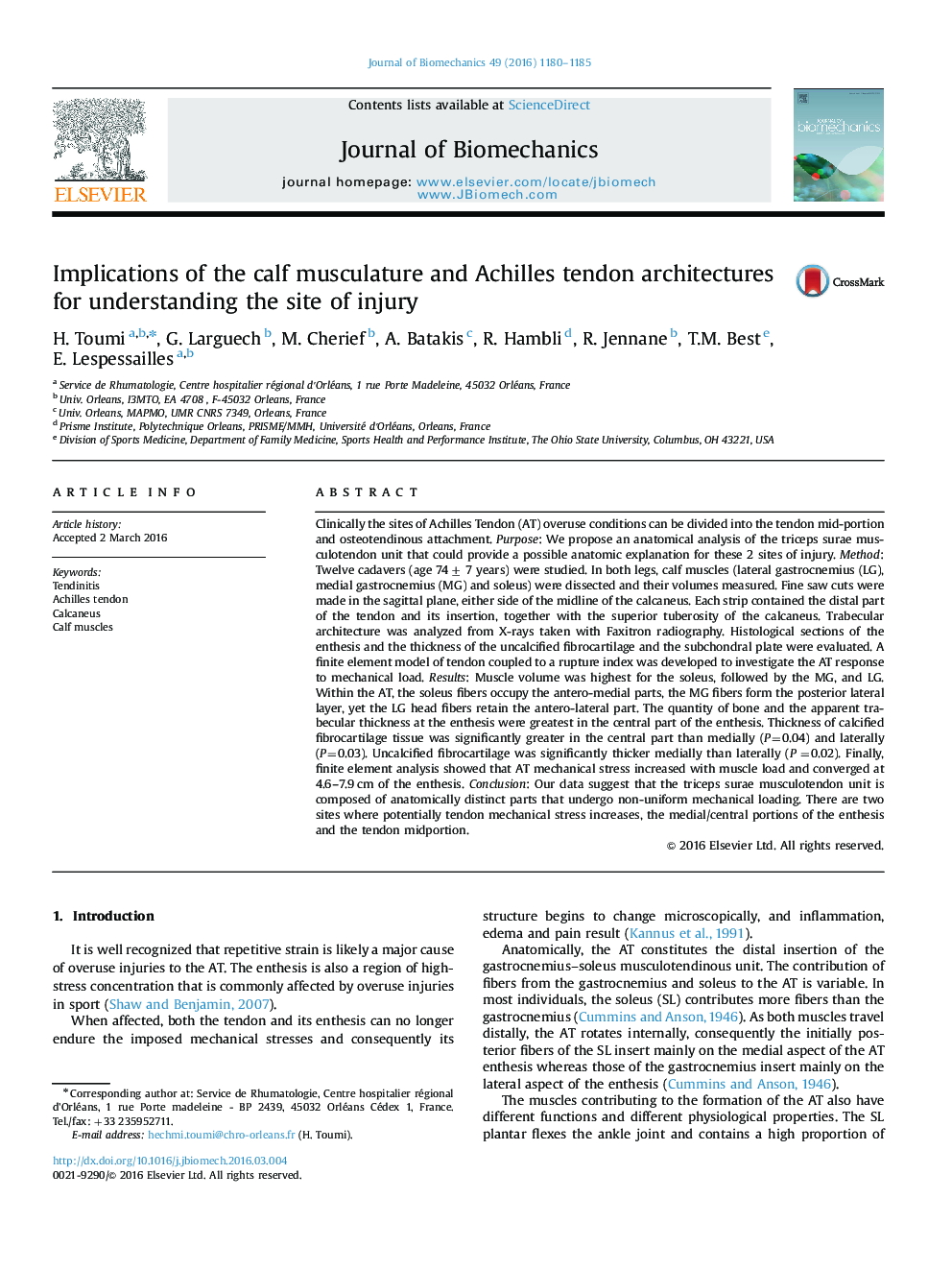| کد مقاله | کد نشریه | سال انتشار | مقاله انگلیسی | نسخه تمام متن |
|---|---|---|---|---|
| 871837 | 910203 | 2016 | 6 صفحه PDF | دانلود رایگان |
Clinically the sites of Achilles Tendon (AT) overuse conditions can be divided into the tendon mid-portion and osteotendinous attachment. Purpose: We propose an anatomical analysis of the triceps surae musculotendon unit that could provide a possible anatomic explanation for these 2 sites of injury. Method: Twelve cadavers (age 74± 7 years) were studied. In both legs, calf muscles (lateral gastrocnemius (LG), medial gastrocnemius (MG) and soleus) were dissected and their volumes measured. Fine saw cuts were made in the sagittal plane, either side of the midline of the calcaneus. Each strip contained the distal part of the tendon and its insertion, together with the superior tuberosity of the calcaneus. Trabecular architecture was analyzed from X-rays taken with Faxitron radiography. Histological sections of the enthesis and the thickness of the uncalcified fibrocartilage and the subchondral plate were evaluated. A finite element model of tendon coupled to a rupture index was developed to investigate the AT response to mechanical load. Results: Muscle volume was highest for the soleus, followed by the MG, and LG. Within the AT, the soleus fibers occupy the antero-medial parts, the MG fibers form the posterior lateral layer, yet the LG head fibers retain the antero-lateral part. The quantity of bone and the apparent trabecular thickness at the enthesis were greatest in the central part of the enthesis. Thickness of calcified fibrocartilage tissue was significantly greater in the central part than medially (P=0.04) and laterally (P=0.03). Uncalcified fibrocartilage was significantly thicker medially than laterally (P =0.02). Finally, finite element analysis showed that AT mechanical stress increased with muscle load and converged at 4.6–7.9 cm of the enthesis. Conclusion: Our data suggest that the triceps surae musculotendon unit is composed of anatomically distinct parts that undergo non-uniform mechanical loading. There are two sites where potentially tendon mechanical stress increases, the medial/central portions of the enthesis and the tendon midportion.
Journal: Journal of Biomechanics - Volume 49, Issue 7, 3 May 2016, Pages 1180–1185
